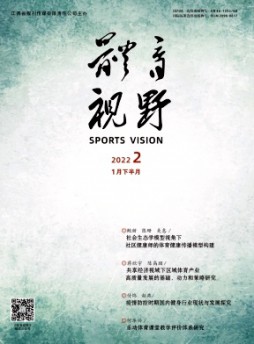體育行政論文范文
前言:我們精心挑選了數(shù)篇優(yōu)質(zhì)體育行政論文文章,供您閱讀參考。期待這些文章能為您帶來啟發(fā),助您在寫作的道路上更上一層樓。

第1篇
關(guān)鍵詞:象似性,文體,文體特征
中圖分類號:H152 文獻標識碼:A 文章編號:1812-2485(2012)04-033-5
Stylistics focuses on studying the circumstances and skills of language use, the effect of the particular language variation which the author adopts. Iconicity refers to the iconic relation between linguistic form and the meaning it expresses. It can be classified into magic, diagrammatic and metaphorical iconicity. The author may use or violate the principles of iconicity in order to achieve the specific stylistic effects, and the principles can also reflect the stylistic features in turn. It can provide a new perspective for stylistics to analyze the stylistic features of literary works from the principles of iconicity. However, there are not many works which focus on the study of iconicity and style. In this paper, we hold the view that iconicity and stylistic features are closely connected, and by analyzing the principles of iconicity in literary works, it can provide a panoramic picture of the stylistic features of a work for the readers. This paper will many observe the principles of iconicity, such as, the quantity iconicity, sequence iconicity, spatial iconicity, distance iconicity and topic iconicity. It aims to reveal the relationship between iconicity and style. It hopes to give an insight to the analysis and appreciation of literary works.
1 Arbitrariness and Iconicity
Ferdinand de Saussure, the father of modern linguistics, maintained that the form of most words is linked to what they signify only by convention. He states that it is the “first principle of the nature of the language sign”, which says that the “l(fā)inguistic sign is arbitrary” (Saussure 2001: 67). Since then, Saussure’s arbitrariness dogma has been widely agreed upon and even exaggerated in different ways. This point can find evidence in Charles Hockett (1958). In that book, Hockett defines language as a system of arbitrary vocal symbols used for human communication. However, Saussure himself stated another important idea as well at the same time.
The fundamental principle of the arbitrary nature of the linguistic sign does not prevent us from distinguishing in any language between what is intrinsically arbitrary and what is relatively motivated. Not all signs are absolutely arbitrary. In some cases, there are factors, which allow us to recognize different degrees of arbitrariness, although never to discard the notion entirely. The sign may be motivated to a certain degree…(Saussure 2001: 130).
From those words quoted, we can see that Saussure admits the relative motivation of language at the level of single linguistic sign. However, the iconic properties of language have not been explored further. As time goes by, human beings invent and develop their language for the sake of communication with the social and cultural development, and they find that the principle of arbitrariness isolates language from reality. So iconicity appears and begins to challenge the idea of arbitrariness. The notion of iconicity originates from the book written by Charles Peirce. He identifies three types of signs: icon, index, and symbol, which differ form each other in terms of the degree of arbitrariness. An icon is a sign refers to the object that it denotes merely by virtue of characteristics of its own, and the sign possesses these characteristics whether any such object actually exists or not, and the third an index is a sign which refers to the object that it denotes by virtue of a law usually association of general ideas, which operates to cause the symbol to be interpreted as referring to that object. The three types of signs thus operate in different ways: icon by means of resemblance, index by means of contiguity and symbol by means of arbitrary association.
However, iconicity, as the opposite attribute to arbitrariness, had not been widely accepted until the cognitive linguistics came into being because of Saussure’s viewpoint of the arbitrary nature of language. Cognitive linguistics, based on our experience in the world and the way in which we perceive and conceptualize the world, is not only an approach to language, but also the result of the combination of cognitive philosophy and linguistics. it observes language in a comprehensive way, i.e. it takes into account the factors of reality, perception, and linguistic sign. Therefore, cognitive linguistics puts forward that the semantic structure is not directly equal to the structure of the external objective world but corresponds to the conceptual structure closely associated with human's body experience. That is to say, linguistic signs are not the direct image of reality. Because when human maps his experience onto signs; he consciously or unconsciously imposes something subjective on the result of his observation, then what language reflects is a conceptualized world, not the real world. Since linguistic structure is in correspondence with external experiential structure in some respects; it is ironically motivated. Just as Croft (2000: 164) in Typology and Universals claims that Iconicity is a type of external motivation for linguistic structure. The intuition behind iconicity is: the structure of language reflects in some way the structure of experience or reality, that is to say, the structure of the world. Therefore, it is imperative to make it clear that what linguistic structure imitates is not the external reality, but a subjective perception, or rather conception of reality, a mental structure which is related to external reality but does not merely imitate or copy it. This statement is especially true of literary text, especially in poetic text. Iconicity in poetry does not really consist in a mirroring of objective reality, but in an interpretation or structuring of reality or experience from a certain poet's personal point of view. That is why poet experience and perceive the world differently from ordinary people in their poems and ultimately harness the great power of language to its fullest extent. Hence, following sections will review the studies on iconicity in language and literature both abroad and at home.
2 Iconicity and Style
2.1 Quantity Iconicity
Quantity iconicity, in simple words, is `formal complexity corresponds to conceptual complexity.' That implies more of form means more of content. In other words, more linguistic material is intended to express more meaning. This phenomenon is similar to the markedness theory from the language typology, which says that the marked linguistic form is more complicated than the unmarked linguistic form; the meaning of the former is also more complicated than that of latter. Quantity iconicity manifests itself on the following three linguistic levels: word-level, sentence-level and text-level. Word-level Quantity iconicity can be exemplified by English adjective and its comparative and superlative degree. Let us take the adjective word "thick" for instance, its comparative form is "thicker" and its superlative form is "thickest ". The degree of their meaning is as follows: positive degree
Besides the quantity iconicity at word level, we can also find examples at sentence level. At sentence level, as we said before, more of form implies more of content, of meanings. For example:
(1) Millions of young people who are keen on knowledge are expecting the book.
(2) They are expecting the book.
Compare (1) and (2), both of them express the same or similar meaning. The difference is (1) implies something, such as the speaker wants to make this information being much more prominent, while (2) only functions to convey that some people were expecting the book without any emotions.
The principle of quantity iconicity indicates that when the speaker wants to express some prominent information, he will probably borrow a hand on words. That means, when the language user intends to make some information prominent, he will speak more. Another significant implication of quantity iconicity is that when the language user use more words when less will do, the social relationship between the speaker and the listener will be father, and thus the style will be more formal. To put it simple, the deviation of language number from the normal standard will produce rhetorical effects and in this way the stylistic features can be revealed through quantity iconicity.
2.1 Sequence Iconicity
Sequence Iconicity means the linear order of the word or sentence corresponds to the sequence of events in the world or the perception of the world. (Wang Mingyu, 2004:413). Thus, it is also called linear iconicity. Givon (1994:54) also claimed that the order of clauses in a coherent text tends to correspond to the temporal order of the occurrence of the depicted events. Linguists (e.g. Haiman 1985a:4) have frequently referred to Julius Caesar's famous pronouncement "veni, vidi, vici" (I came, I saw, I conquered) as exemplifying the fact that in a narrative the order of clauses usually reflects the order of the events described. Therefore, we infer that sequence iconicity appears on both sentence-level and text-level. The sentence `I came, I saw, I conquered' shows that they are put together linearly: the earliest event first, the latest last, separated by commas, with no other elements. The order in language corresponds exactly to the order in real time.
Sequence iconicity can also occur on text-level. Sequence iconicity at text-level can be exemplified by composition writing. We know that an article or a paragraph can be written in a chronological order, from general to specific, from near to far, from a topic to an other topic, etc. or vice versa. Of course, modern writers often break those rules to give readers a sense of novelty and thus make their works more attractive. For instance, Thomas Hardy’s Tess of the d’Urbervilles develops with the alternation of four seasons. In spring, young, beautiful Tess is energetic and she is as saint as god; in autumn, being sexually insulted, she returned home and was abused by people around, in summer, she got a job in the milk factory and being full of energy, she also fall into love with someone, while in winter, she was abandoned after marriage, being looked down upon in the factory. The author depicts the story in accordance with the changes of seasons. It can reflect the tragedy of Tess and it also can make the story more vivid.
2.2 Spatial Iconicity
Spatial iconicity refers to the similarity between the structure of the literary works and the spatial structure of reality. Like the settings, tourism guidebooks, the development of the text will be correspondent with the spatial structure on which the depiction is based. In poems, the poets will resort to the arrangement of the linguistic form to reflect the features of the distribution of objects. For example, H. W. Longfellow in his Snowflakes:
Out of the bosom of the Air,
Out of the cloud-folds of her garments shaken,
Over the woodlands brown and bare,
Over the harvest-fields forsaken,
Silent, and soft, and slow
Descends the snow.
In this poem, the poet depicts the picture of the snow, down through the Air, the clouds, the forest, and the land, at last falls on the earth. It embodies the spatial iconicity between the linguistic form and the reality, and thus it produces an image of snowing.
2.3 Distance Iconicity
Distance iconicity is also known as proximity iconicity. It involves both formal and conceptual relationships between linguistic elements. The cognitively-based principle of distance iconicity maintains that linguistic distance between expressions or elements corresponds to the conceptual distance between them. According to Haiman, two ideas are conceptually close to the extent that first, they share semantic properties (e.g. two verbs are closer if they share a common tense, mood, aspect, subject, object or topic); second, one is thought to affect the other (e.g. the conceptual closeness between a verb and its object varies with the transitivity of the verb); finally, they are perceived as inseparable (Haiman 1983: 783). In literary works, the distance of words in a text reflects conceptual closeness of constitutive elements of the world of fiction or the distance between concepts.
The distance embodied by linguistic forms is iconic to the distance in society. The more distant between the linguistic symbols realize the more distant relationship. ‘Y-o-u, y-e-s’ is a kind of distance or proximity iconicity. There is a high degree of similarity between style and the social distance: formal-informal, complex/simple, etc. the formal, complex and long sentences are a hint to farther social relationships. In other words, we can also say that the more polite, the farther the social distance is. Another kind of distance to be mentioned is the body distance between the participants involved in a conversation. The body distance is a metaphor of the social distance. Of course, here we are discussing the general situation because we have to bear in mind any time that the culture is divided into the high contact and low contact culture.
2.4 Phonological Iconicity
Phonological iconicity is also called variously sound iconicity, onomatopoeia, phonaesthesia, phonetic motivation or phonetic or sound symbolism. It means that individual sounds or the combination of sounds are the thoughts to reflect, or symbolize properties of the world, and thus to have meaning. Andreas Fischer (1999:123) distinguishes three different categories of phonological iconicity: auditory iconicity, articulatory iconicity and associative iconicity in order to address a fundamental problem: how exactly speech-sounds can be said to be iconic. The first also can be called primary onomatopoeia. Articulatory iconicity is constituted by the position of various speech organs relative to each other when certain vowels are uttered and by the spatial or dimensional meaning of these speech sounds. The basis of comparison is the articulation of sounds rather than the sounds themselves, and so is termed as articulatory iconicity. For example, many linguists have observed that in a number of languages of the world the high front vowel /i/, which in the vowel system is described as high, front and ungrounded, is often associated with one set of these meanings: little, near, high, etc; whereas the low vowel /a/, which is described as low, back and rounded, is associated with the other set: large, far, low, etc. the motivation is that the former is usually produced with the tongue raised as high and as forward as possible, which leaves a little room for the air stream to break through, such as little, wee, teeny, this; while the latter one is usually produced with the mouth comparatively wide open by raising the tongue as low and as far back as possible, which is quite ironically represented in the words such as large, vast, far, etc. Regarding associative iconicity, it is constituted by sound combinations occurring as parts of word that seem to evoke certain meanings or meaning elements. For example, initial fl- in flame, flare, flicker, flimmer evokes `emission of light', whereas final ash in bash, brash, clash, crash, dash, gnash, hash, lash, mash, rash, smash, splash, thrash, connotes `violence' and/or `speed'. From these examples, we can see that most of them do not mirror sounds directly and they are associated vaguely with certain meanings, so it is also termed as phonaesthesia or secondary onomatopoeia. As the terms imply, articulatory iconicity and associative iconicity (i.e., secondary onomatopoeia) are seen as less direct, less immediate, and more abstract than auditory iconicity (i.e., primary onomatopoeia). Thus we term auditory iconicity as direct phonological iconicity and articulatory and associative iconicity as indirect phonological iconicity. Although all the types of phonological iconicity are well-attested in Cummings' poetic text, direct phonological iconicity is strictly limited and is easy for readers to recognize and sense their beauty. Phonological iconicity can occur at word level, i.e. onomatopoeic words, and text level. We will check this one be one. First we will give an example of phonological iconicity at word level.
The cow mooed.
The bull bellowed.
The chicken cheeped.
The cock cockadoodledooed.
The pig grunted.
The dog barked.
The duck quacked.
The goat bleated.
The door banged open.
The slapped the book shut.
The actor was hissed off the stage.
Next we will give an example of phonological iconicity at text level. For example, the following excerpt from Mark Twain’s The Adventures of Huckleberry Finn.
My souls, how the wind did scream along! And every second or two there’s come a glare that lit up the whitecaps for a half a mile around, and you’d see the islands looking dusty through the rain, and the trees thrashing around in the wind; then comes a h-whack-bum! Bum! bumble-umble-umbum-bum-bum-bum―and the thunder would go rumbling and grumbling away, and quit―and then rip comes another flash and another sockdolager.
3 Conclusion
Iconicity, as one of the attributes of language opposite to arbitrariness, has been one of the hot topics of cognitive linguistics in the past two decades. From the literature view, we can find that whereas the study of iconicity in everyday language has become an accepted part of modern linguistics, this is less the case with the literary use of it. Traditionally, the main objects of iconic investigations by literary scholars have been the literary use of onomatopoeia and sound symbolism on one hand and of typography on the other, especially in China. This paper discusses the relationship between iconicity and style. It mainly focuses on quantity iconicity, sequence iconicity, spatial iconicity, distance iconicity and phonological iconicity. From analyzing the principle of iconicity in literary works, we find that it can provide a new perspective for stylistics to analyze the stylistic features of literary works from the principles of iconicity.
References
1 Croft,William. (2000). Typology and Universals. Beijing: Foreign Language Teaching and Research Press.
2 Haiman,J. (1983). Iconic and Economic Motivation. Language, 59: 781-819.
3 Haiman,J. (1985). Iconicity in Syntax. Amsterdam: John Benjamins Publishing Company.
4 Saussure,F(xiàn). D. (2001). Course in General Linguistics. Beijing: Foreign Language Teaching and Research Press.
5 Ungerer,F(xiàn) and Schmid, H.J. (2005). An Introduction to Cognitive Linguistics. Beijing: Foreign Language Teaching and Research Press.
6 王銘玉.語言符號學(xué). 北京: 高等教育出版社,2004.
第2篇
關(guān)鍵詞:政府問題;開放性;公共管理
一、傳統(tǒng)行政管理與政府問題
在傳統(tǒng)的行政學(xué)理論中,政府是公共行政(publicadministration)的主體。在公共管理理念中,政府是居于公共管理(PublicManagement)核心地位和主導(dǎo)地位的主體之一。長期以來,特別是建立在行政行為階段的政府理論,對政府的考察一直停留在內(nèi)部靜態(tài)結(jié)構(gòu)上,甚至批評政府組織根本無法適應(yīng)環(huán)境變遷的需要。一些學(xué)者在分析政府問題時,對政府組織的靜態(tài)形式考慮過多,包括結(jié)構(gòu)模型、管理方式、制度要素、價值判斷等方面,最大的失誤是忽視了運轉(zhuǎn)起來的政府組織和參與其中活動的人之間的互動關(guān)系。這種風(fēng)氣從古典組織理論時期一直蔓延到今天,可以稱之為“政府組織的靜態(tài)”。
重新閱讀古典組織理論的經(jīng)典,我們會獲得新的發(fā)現(xiàn)。馬克斯·韋伯官僚制理論設(shè)計的前提是建立一套官僚權(quán)力對行政的控制機制。在他看來,勞動分工、層級節(jié)制、職業(yè)訓(xùn)練都是以權(quán)力的不可侵犯為基礎(chǔ),權(quán)力的絕對集中才能保證金字塔式的結(jié)構(gòu)穩(wěn)固存在。“任何官僚制組織都力求通過對知識和意圖的保密來增強其專業(yè)上的優(yōu)越地位”。[1]韋伯同時認為,官僚制的技術(shù)優(yōu)越性高于其他任何組織,其基本原則實現(xiàn)了官僚制在行政中的協(xié)調(diào)與控制功能。但事實上官僚組織的理論設(shè)計與實踐之間的嚴重脫節(jié),官僚制的不透明性、組織僵化、嚴格的等級制度和理性主義的形式使任何公共組織不可避免地陷入封閉狀態(tài)中,并且拒絕民主、民主思想的滲透。
馬克斯·韋伯(MaxWeber)在設(shè)計組織模型時首先把靜態(tài)的規(guī)則看成最重要的,強調(diào)規(guī)則對組織的重要性。其次,把組織結(jié)構(gòu)分層看作是重要的,強調(diào)科層與權(quán)力、責(zé)任的完全配套。第三,強調(diào)權(quán)力神圣不可侵犯,目標的精確性。第四,非常看重官僚制每一層級中個人的質(zhì)量——是否是一個具備專業(yè)知識的技術(shù)官僚。在韋伯那里,組織要素的重要性超過要素之間的互動作用。
巴納德的研究重點放在組織結(jié)構(gòu)的邏輯分析上,也是從靜態(tài)形式入手分析組織的。他的觀點是正式組織與非正式組織的重要意義是相同的,組織以什么方式、什么狀態(tài)產(chǎn)生是判斷組織結(jié)構(gòu)、性質(zhì)的關(guān)鍵,各級組織包括軍事的、宗教的、學(xué)術(shù)的、的都是一個協(xié)作的系統(tǒng),它們都是社會這個大協(xié)作系統(tǒng)的某個部分和方面。所有的協(xié)作行為都是物的因素、生物的因素、人的心理因素和社會因素這些不同因素的綜合體。這些協(xié)作組織是正式組織,包含協(xié)作的意愿、共同的目標和信息聯(lián)系。在所有的正式組織中都存在非正式組織。正式組織是保持秩序和一貫性所不可缺少的,而非正式組織是提供活力所必須的。兩者是協(xié)作中相互作用、相互依存的兩個方面。在巴納德的觀點中,協(xié)作的重要性顯然是建立在更重要的對組織性質(zhì)的認識基礎(chǔ)之上。
同樣,法約爾的研究以企業(yè)整體作為研究對象,他認為管理理論是“指有關(guān)管理的、得到普遍承認的理論,是經(jīng)過普遍經(jīng)驗檢驗并得到論證的一套有關(guān)原則、標準、方法、程序等的完整體系”,有關(guān)管理的理論和方法不僅適用于公私企業(yè),也適用于軍政機關(guān)和社會團體。在1916年出版的《管理和一般管理》中,法約爾將管理活動分為計劃、組織、指揮、協(xié)調(diào)和控制等五大管理職能和十四項管理原則,并進行了相應(yīng)的分析和討論。五大管理職能和十四項原則的重要性超過其他方面。
1937年,盧瑟·H·古立克(LutherH.Gulick)和林達爾·厄威克(LyndallUrwick)發(fā)表《行政論文集》(PapersScienceofAdministration),提出了“POSDCORB”職能,但僅“代表了1937年的公共行政”,“隨著時間的推移,它們在許多讀者內(nèi)心深處變成了僵化的‘科學(xué)原則’。”[2][P.55]1961年,利格斯發(fā)表《公共行政生態(tài)學(xué)》一文,一定意義上了行政生態(tài)理論,但他只是把行政行為放在環(huán)境的簡單背景上進行剖析,仍舊沒有逃脫組織是一種靜態(tài)形式的思維模式。
也許,對于一些細小組織而言,以什么樣的狀態(tài)存在并不重要,但對政府組織而言,靜態(tài)形式的過多考察明顯地造成了政府組織的封閉性。
與此同時,傳統(tǒng)的行政管理理論和官僚制理論對“行政”與“效率”的理解適應(yīng)了這種封閉性,并使之獲得了長足的發(fā)展。[3]官僚制范式的流行摧毀了一切公共組織可能有的變革思想,雖然后來許多學(xué)者對其弊端進行了批評,但官僚制作為一種有效的組織形態(tài)依然長期存在,并且在此后的發(fā)展中演變成了另一種形態(tài),即作風(fēng)。作風(fēng)表現(xiàn)出來的等級森嚴、權(quán)力集中、惰性嚴重,沒有進去精神,無效率等方面成為一切不作為的政府組織的病癥,也造成了事實上的政府組織的嚴重封閉狀態(tài)。在另一方面,傳統(tǒng)的行政管理理論始終沒能擺脫單一的價值追求,過多地圍繞“行政”與“政治”的關(guān)系進行爭論,看重“效率”這一靜態(tài)結(jié)果,而忽視了對民主、公正、回應(yīng)性、平等動態(tài)價值的考察。同時,強調(diào)政府行為與政治行為不可分離,政治對政府的控制主要以政策的產(chǎn)出為基礎(chǔ),這樣,政府的行為就首先是為政治負責(zé)而不是為公眾負責(zé),表現(xiàn)出對社會、公眾封閉的一面。休斯在“政治控制的問題”的題目下指出威爾遜“要對政治與行政,或政策與行政進行嚴格的區(qū)分永遠都是不現(xiàn)實的,而且,美國實行的改革運動并未能實現(xiàn)將政策從行政中分離出來,或是將政治家從行政管理者中獨立出來”恰好證明了這一點。[4][P.46]
政府組織的基本特性并不是靜態(tài)形式所表現(xiàn)出來的封閉性狀態(tài),“管理職能”一詞也不能代替政府的特性,而政府特性的研究也不能長期被忽視下去。拋開有關(guān)的爭論,仔細審視政府組織的運轉(zhuǎn)運動過程,全面梳理政府的運行軌跡,擯棄政府變革與發(fā)展的阻力,從一個新的視角全面理解政府組織,我們就會把握住政府的本質(zhì)特性,促進政府更快、更好地前進。
二、政府的開放性特征
一個完整的組織從功能上看,其具備三個方面的特征:其一、資源聚集功能,即使各種分散的人力、物力、財力、智力、信息聚合在一起。其二、資源轉(zhuǎn)換功能,即促使各種資源進行有效的配置,形成新的合力,實現(xiàn)“整體大于部分之合”的目的。其三、能量釋放功能,即通過一定的方式釋放組織的新能量,實現(xiàn)依靠單一資源無法實現(xiàn)的目標。從構(gòu)成上看,社會組織的構(gòu)成要素分為靜態(tài)要素和動態(tài)要素兩部分。靜態(tài)要素構(gòu)成組織的基本形式,動態(tài)要素構(gòu)成組織的運轉(zhuǎn)過程。靜態(tài)要素是隱性的,只有通過動態(tài)要素才能體現(xiàn)出來。動態(tài)要素是顯性的,只有在靜態(tài)要素的基礎(chǔ)上才能發(fā)揮作用。政府組織是特殊的組織,其聚集了豐富的人力、物力與財力資源,聚集了最有效的信息資源和掌握著最大的智力資源,通過有效的資源配置,政府組織可以解決其他社會組織無法解決的公共,提供公益物品和服務(wù),滿足公共的利益追求。在政府組織中,靜態(tài)要素與動態(tài)要素的構(gòu)成極其復(fù)雜,動態(tài)過程所表現(xiàn)出來的特性代表了政府一切要素的力量。在政府組織的多種特性中,開放性最為重要,也就是說政府組織的開放性特征是政府動態(tài)過程中所表現(xiàn)出來的最主要的特征,是所有構(gòu)成要素的本質(zhì)體現(xiàn)。
政府組織是依靠選擇建立起來的,公共權(quán)力的分享與公共責(zé)任的承擔(dān)要求政府必須以開放的方式與外部建立良性的關(guān)系。這不僅是政治民主的需求,也是政府組織自身的需求。Allison在其建立的模式中把公共組織所面臨的外部構(gòu)成要素歸納為三種協(xié)調(diào)關(guān)系,即:與同一組織的外部單位或該組織的各個部門的協(xié)調(diào)關(guān)系;與獨立組織的協(xié)調(diào)關(guān)系;與新聞媒體和公眾的協(xié)調(diào)關(guān)系。[5]開放性正是實現(xiàn)這種協(xié)調(diào)的前提。然而,現(xiàn)實中的政府組織忽視了這一點,其基本運轉(zhuǎn)過程始終處于封閉狀態(tài),因此,必要的協(xié)調(diào)中總是問題不斷。
一些者從古典組織的視野出發(fā),把內(nèi)部因素的互動關(guān)系看作政府組織存在的基礎(chǔ),而另一些學(xué)者包括張金鑒先生則從行政生態(tài)的角度把外部因素的互動關(guān)系看得很重要。在這些研究中,他們看到了內(nèi)部與外部之間的關(guān)系,但對這種關(guān)系存在的基礎(chǔ)忽視了,開放性正是這一關(guān)系存在的基礎(chǔ),能夠解決和疏通因內(nèi)外部關(guān)系不暢而造成的行政問題的發(fā)生。
可以從另一個角度證明政府組織開放性意義的有力證據(jù)是尼古拉斯·亨利(NicholasHenry)的觀點,他從相關(guān)中證實組織模型應(yīng)該有三種流派:封閉模型、開放模型和綜合模型。封閉模型中以韋伯為代表的官僚制理論(Bureaucratictheory)、以泰勒、吉爾布萊斯為代表的管理理論(Scientificmanagement)以及古立克、厄威克等為代表的行政管理(Administrativemanagement)或一般管理理論(Genericmanagement)三種最為盛行。開放模型中人際關(guān)系學(xué)派、新組織發(fā)展學(xué)派、組織與環(huán)境互動學(xué)派三種最為盛行。官僚制體制所治理的公民和官僚本身是反人本主義的,科學(xué)管理追求的效率能夠服務(wù)于人本主義,也能夠服務(wù)于其他價值。開放模型與封閉模型根本的差異可歸納為四項感知上的不同:對組織環(huán)境的感知、對人性的感知、對組織中操縱理念的感知和對組織在社會的角色和意義的感知。亨利雖然把開放模型的起源追到圣西門和奧古斯特·孔德的寫作年代,并認可了他們“組織本身則是人性的解放力量”,“強調(diào)自發(fā)性組織的價值”的觀點,[2][P.93-127]但組織的開放模型真正得到實踐并不是從理論源頭就開始了。因此,認識到組織的封閉模型與開放模型并十分完整地進行理論是尼古拉斯·亨利的貢獻,也為我們進一步理解政府組織的開放性意義提供了重要的依據(jù)。
湯姆·伯恩斯(TomBurns)和G·M·斯道克(G.M.Stalker)1961年在其《革新的管理》(《ManagementofInnovation》)一書中對開放模型的主要特征進行了表述,也為我們理解開放性提供了。開放模型的主要特征是:在不穩(wěn)定條件下出現(xiàn)的非常規(guī)任務(wù);專門化的知識來完成共同的知識;強調(diào)目的(ends)(或者把工作完成)而不是手段;組織內(nèi)部的沖突是由同事的交互作用加以協(xié)調(diào)而不是由上面來裁決;強調(diào)“責(zé)任的輪替(sheddingofresponsibility)”;個人對組織整體的責(zé)任感和忠誠感;組織被看成一個流動式的結(jié)構(gòu)(fluidicnetworkstructure);知識能夠位于組織的任何地方;組織中人與人之間的交互作用不僅傾向于縱向的而且還傾向于橫向的;互動方式是為了成果和“建議”(而不是命令),而且以“貴族神話”為特征,包含了上下級最明顯的服從關(guān)系;強調(diào)工作成果以及完成任務(wù)的卓越績效,有時會犧牲對上級的順從;聲譽外部化了等等。[2][P.102-103]組織開放模型的特征是對其開放性的詮釋,作為最大的和最為深遠的公共組織—政府的開放性是政府組織發(fā)展到一定階段的必然產(chǎn)物,直接關(guān)系到政府組織的生存狀態(tài)。
開放性是政府文明的標志,也是政治文明的標志。作為民主政治中的一種基本理念,它是一種渠道,傳遞民眾和社會對政府的呼聲和要求,并要求政府以自己的行動做出積極的回應(yīng)。作為政府追求的一種價值,它是對政府狀態(tài)的描寫,反映了民眾對政府評價和政府在民眾心目中的地位。作為一種制度安排,它意味著在政府內(nèi)部與外部必須建立有效的監(jiān)督機制,以利于政府機器內(nèi)在運行和外在運行狀況良好。政府開放性的基本內(nèi)涵:(1)政府文明。制度追求與道德追求是政府的重要任務(wù),關(guān)心政府的每一成員并實行人性化管理,通過民主的渠道樹立政府的威信,通過科學(xué)的建立政府的信譽,有良好的政風(fēng)。(2)發(fā)展環(huán)境優(yōu)良。政府有能力為自己創(chuàng)造和提供一個良好的發(fā)展環(huán)境,并與之建立良好的溝通機制,使政治環(huán)境寬松,環(huán)境良好,社會環(huán)境穩(wěn)定,環(huán)境優(yōu)良。(3)政府職能獨立化。政府的基本職能:政治、經(jīng)濟、文化、社會職能是政府獨有的。要使政治職能完善,通過民主與法制的手段確保一切民力得到正常發(fā)揮。要使經(jīng)濟職能社會化,通過建立多元的經(jīng)濟主體使經(jīng)濟成份的構(gòu)成多樣。要使文化職能豐富化,文化產(chǎn)品多樣和多層次,真正滿足人民群眾對文化生活的追求。要使社會職能健全,最大可能和最全面提供各種社會保障產(chǎn)品、提供人人享有的社會救濟和健全的社會福利事業(yè)。(4)政府行為公開化。通過行政聽政制度、行政采購制度、行政審批制度的完善,使政府在行政決策、行政執(zhí)行、行政指揮、行政控制方面的一切政務(wù)進一步公開化、透明化,并逐步建立各級政府財務(wù)公開制度和各級官員財產(chǎn)公開制度。(5)行政監(jiān)督透明化。通過對監(jiān)督目標的選擇把政府自身監(jiān)督與其他監(jiān)督主體共同監(jiān)督結(jié)合起來,公開監(jiān)督結(jié)果,提出改進措施,確保監(jiān)督效果。
由于政府組織具有主導(dǎo)地位,政府組織的開放性可以產(chǎn)生不凡的意義。在組織之間,政府組織、私營部門和第三部門中公平、民主的意義大于效率的意義;組織無等級與公共政策的平等性;公共制度(包括政治制度)的發(fā)展與進步先于技術(shù)的發(fā)展與進步,化模式是先進政治模式的結(jié)晶;組織在縱向和橫向方面都表現(xiàn)出網(wǎng)絡(luò)的穩(wěn)固性,信息傳輸渠道暢通,即政府組織從中央到地方的縱向延伸與政府組織的橫向展開、私營部門從大集團到家庭作坊式經(jīng)營的縱向延伸與私營部門的橫向展開、第三部門的不同類型分割等等,構(gòu)成了整個社會完整的網(wǎng)絡(luò)體系,便于各類信息的傳輸、共享。在實現(xiàn)民主行政的進程中,實現(xiàn)從行政聽政到行政財務(wù)的全面公開;實現(xiàn)從政府上網(wǎng)到網(wǎng)絡(luò)政務(wù)的全面公開,公文開放瀏覽,通過網(wǎng)絡(luò)虛擬辦公解決實際中效率底下的問題;實現(xiàn)從人的管理到制度管理的轉(zhuǎn)變;實現(xiàn)政風(fēng)的根本好轉(zhuǎn),建立公務(wù)人員平等、自由、民主參與公務(wù)的機制。顯然,在這里,政府的開放性有兩重基本價值:一是保證了有效監(jiān)督機制的運行,通過規(guī)制與參與,確立“平行式”監(jiān)督和“滲透式”監(jiān)督機制。二是有利于政府與公民社會之間建立零距離。
政府開放性以政府開放度為標準。衡量政府的開放度主要應(yīng)該有三個方面的指標:制度開放指標、行為開放指標和開放進展指標。制度開放指標包括政府制度有多少種可以公開和查閱,有多少種無密級可言,政策和規(guī)章有多少可以在公共場所(包括互聯(lián)網(wǎng))上公布。百分比越大開放度越大。行為開放指標包括政府決策項目的公開數(shù)目,行政聽政項目的公開數(shù)目和行政聽政次數(shù)、人數(shù)指標和公眾的評判指數(shù),以及財務(wù)公開的數(shù)目。
政府開放性也是有限度的。開放性以不影響政府組織存在、不動搖政府組織作用的發(fā)揮為前提。無限度的開放性政府會失去社會價值,會導(dǎo)致全社會無政府狀態(tài)。有限度的開放性會使政府陷入封閉狀態(tài)。因此,強調(diào)開放性是強調(diào)政府開放性理性上的最大化,而非無限化。
過去有關(guān)開放性的理解十分片面,僅認為是政府組織的一種簡單狀態(tài)描述,是有關(guān)經(jīng)濟、、政策等各方面的數(shù)據(jù),包括技術(shù)數(shù)據(jù)和程序數(shù)據(jù)的進一步公開、政務(wù)信息公開和簡單的行政聽政制度,事實上并不是這樣,隨著政府開放度的加深,開放性的內(nèi)涵會更加豐富、深刻。
三、開放性與公共管理
公共管理時代對政府提出了極高的要求,既不同與古典行政學(xué)時期,也不同與新公共管理時期,它要求政府以極度開放的姿態(tài)應(yīng)對一切挑戰(zhàn)。[*]公共管理時代的基本特征是社會化管理趨勢日益明顯,公益物品的供給、公共資源的利用建立在全社會共同關(guān)注的基礎(chǔ)上,并且以提供公益物品、解決公共問題,實現(xiàn)公共利益為核心,政府職能市場化、政府權(quán)力分散化、公共服務(wù)社會化、政府管理企業(yè)化和政府治理,這是傳統(tǒng)狀態(tài)下的政府根本無法解決的問題。開放性是政府自治的結(jié)果,是政府實現(xiàn)善治的開始,也只有在開放性的特征下,政府公共管理的任務(wù)才能完成。
公共管理時代是全球化時代和知識產(chǎn)業(yè)興起的時代,開放性適應(yīng)了這兩大發(fā)展趨勢。全球化帶來新的世界政治秩序、經(jīng)濟秩序和價值秩序沖擊著每一個國家,給每一個政府以新的機會、挑戰(zhàn)、權(quán)利和責(zé)任。只有開放性的政府,才能在這種沖擊下獲得新的機會,在各種挑戰(zhàn)面前解決一切可能出現(xiàn)的問題,依靠政府權(quán)力獲得政府利益。知識成為商品和知識產(chǎn)業(yè)的興起促使政府間、政府與社會間的互動、協(xié)調(diào)關(guān)系加強。開放性政府就能夠兼收并蓄,接受各類知識,同時使知識轉(zhuǎn)化成經(jīng)濟力量。政府也因為獲得了更多的知識而變得文明和守信。這兩大發(fā)展趨勢順應(yīng)了公共管理時代對政府發(fā)展環(huán)境的要求,也確定了政府必須有的開放性特征。在問題的另一面,公共管理時代的政府面臨著更多的動態(tài)性問題(dynamicquestion)、復(fù)雜性問題(complexityquestion)與多樣性問題(diversityquestion),以開放性的姿態(tài)解決這些問題是公共管理時代對政府的要求。
開放性能夠解決公共管理時代政府的內(nèi)部關(guān)系問題。政府獲得權(quán)力和鞏固權(quán)力需要經(jīng)過一系列艱難的過程和面對各種各樣的關(guān)系,政府每一步行動都是各種關(guān)系協(xié)調(diào)、控制與選擇的結(jié)果。政府的內(nèi)部關(guān)系通常是不透明的,外部關(guān)系則是清晰的。在政府內(nèi)部,政府統(tǒng)治與政府治理的關(guān)系、成本與效益的關(guān)系、行為與目標的關(guān)系、組織與管理者的關(guān)系等等方面都表現(xiàn)出極不透明的特點,政府自身利益分割上很難照顧各個方面,利益的侵占與沖突使得政府內(nèi)部常常出現(xiàn)不應(yīng)有的爭奪與矛盾斗爭,必要的妥協(xié)與退讓很難做到。而在政府外部,政府與市場可以互補,建立政府生態(tài)的平衡運做機制,同時,政府與其他利益團體之間通過談判可以達成一定的協(xié)議,通過退讓、妥協(xié)達到雙贏。因此,開放性更強調(diào)政府內(nèi)部關(guān)系的開放和透明、利益分割的開放與透明,矛盾的外化和解決矛盾的方法的透明,并由此使內(nèi)部關(guān)系與外部關(guān)系溝通,最終建立“政府內(nèi)部關(guān)系協(xié)調(diào),外部關(guān)系順暢”的發(fā)展模式。
開放性能夠合理地解決政府與市場的關(guān)系問題。對國家總權(quán)力的分配事實上是由公眾委托的政府來承擔(dān)的,政府從誕生的那一刻起,就擁有最大的公共權(quán)力。在整個社會領(lǐng)域,政府作為獨立的社會主體對整個社會事務(wù)的安排有更大的主動權(quán)和支配權(quán)。公共選擇理論與委托人理論以經(jīng)濟領(lǐng)域為例,認為政府失靈與市場失靈同時需要對方去干預(yù)和補救,但這種干預(yù)和補救是自愿的還是強迫的?還是外在制度的安排?顯然,是外在力量的作用,這種外在力量正是政府公共權(quán)力的力量,政府與市場關(guān)系中政府更有主動權(quán)和支配權(quán)。在一個封閉的政府里,政府不會自發(fā)地讓位于市場的干預(yù),市場也不可能自發(fā)地進行干預(yù)。一定意義上,市場的干預(yù)必須取得政府的支持和認可。只有在開放的政府里,政府才會讓位于市場,并安排市場合理干預(yù)和補救因政府失靈而造成的損失。政府的開放性越強,開放度就越大,有效的市場補充越充分,干預(yù)越有效。因此,開放性是協(xié)調(diào)政府與市場關(guān)系,解決政府與市場矛盾的一劑良藥。在市場提供有效的服務(wù)的同時,一個開放的政府懂得自己應(yīng)該做的和必須做的事情,即安德森(Anderson)所認為的:(1)提供經(jīng)濟基礎(chǔ);(2)提供各種公共商品和服務(wù);(3)協(xié)調(diào)與解決團體沖突;(4)維護競爭;(5)保護自然資源;(6)為個人提供獲得商品和服務(wù)的最低條件;(7)保持經(jīng)濟穩(wěn)定。[4]這樣,在整個社會生活領(lǐng)域,就會最終建立起一個“政府做,市場也做”的平等發(fā)展模式。
開放性解決了公共管理中政府的定位問題。在開放理念下,轉(zhuǎn)變政府職能的重要方面就是政府組織的運行職能即計劃、組織、指揮、協(xié)調(diào)、總結(jié)、預(yù)算與人事七個方面必須是開放的,是在公開狀態(tài)下進行的,規(guī)章制度和文件除過的保密之外,民眾和任何社會團體的閱讀、查詢都是公開的和方便的。同時,政府的基本職能包括政治、經(jīng)濟、文化、社會諸方面的功能必須開放。政治的開放程度直接關(guān)系政治文明、政治穩(wěn)定和民主價值的實現(xiàn);經(jīng)濟功能的實現(xiàn)完全依賴經(jīng)濟的開放程度;文化的開放與兼容更有利于文化的多元化和文化功能的最終完善;而社會功能的開放可以使更多的社會利益群體分擔(dān)社會事務(wù),最終減輕政府的負擔(dān)。在開放理念下,政府的結(jié)構(gòu)應(yīng)該是透明的,盡管不同級別的政府組織結(jié)構(gòu)模式不盡相同,但其基本的要素是應(yīng)該清晰的。結(jié)構(gòu)的透明有利于對政府運行成本進行監(jiān)督,最終建立“透明政府”的結(jié)構(gòu)模式和運行模式。
開放性有利于理解公共管理時代公共政策的實質(zhì)問題。公共管理時代,公共決策有兩層含義,其一是政府為自身發(fā)展制定必要的政策,其二是為社會制定規(guī)范和制度,包括符合私營部門和第三部門使用的規(guī)范與制度。政府決策最重要的是堅持民主與科學(xué)原則的統(tǒng)一,最廣泛的民主意味著決策過程最大程度的開放,一切科學(xué)手段的采用意味著決策的正確率增強和能夠經(jīng)得起科學(xué)的檢驗。開放性的政府可以最大限度地體現(xiàn)民主的原則,可以充分吸收科學(xué)家的意見和采用最科學(xué)的辦法進行決策,使決策體現(xiàn)公共價值的實質(zhì),即最大化地滿足公共利益和解決公共問題,最終建立“大家決策,大家參與”的科學(xué)模式。
開放性確立了政府在公共管理中的核心地位,并對政府提出了“做表率”的要求。政府是公共管理的核心,是公共政策的制定者和公共利益的分享者,但并不等于政府可以獨霸和支配公共領(lǐng)域的所有事務(wù)。開放性是政府作為公共部門與私人部門和第三部門最終建立平等的主體關(guān)系,同時更好地體現(xiàn)政府民主、回應(yīng)性、公正、公平的價值。政府必須以行動證明自己是可以承擔(dān)和擁有這一核心地位的,一方面所制定的公共政策不僅僅以政府自身利益為出發(fā)點,兼顧社會各個團體,特別是不制定歧視性政策和不平等政策,另一方面保證社會制度的公平與公正。政府是核心、更是表率,政府開放,其他社會組織、包括私營部門和第三部門也應(yīng)該適度開放,最終實現(xiàn)“全社會開放”的完整體系。
開放性有利于克服公共管理中政府自利性和非理帶來的問題。政府自利性即政府公務(wù)人員依托政府肌體實現(xiàn)個人利益和政府內(nèi)部部門官僚集團為實現(xiàn)部門利益而產(chǎn)生的自私行為稱為自利性。政府能力弱化、權(quán)力異化以及由此導(dǎo)致的公共行政中行政無效果、行政災(zāi)害稱為非理。[9]就運行過程,自利性和非理的產(chǎn)生正是由于政府封閉運轉(zhuǎn),公務(wù)人員行政行為缺乏監(jiān)督,搞內(nèi)部操作造成的惡果。在開放性原則下,不僅可以提高對政府的監(jiān)督力度,而且可以有效監(jiān)督公務(wù)人員的行為過程,特別是公務(wù)人員在公務(wù)活動中的行為,同時,依靠開放的秩序和制度保證一切非理在發(fā)生之前就得到遏止,從而減少政府非理下的災(zāi)害發(fā)生,樹立良好的政府威信。
最后,開放性推動了公共管理時代民主化進程。依靠良好的民主的基礎(chǔ),民主行政、民主管理的渠道愈加暢通,民主的結(jié)果更加有保證。同時,從經(jīng)濟領(lǐng)域入手改變忽視效率的作風(fēng),實現(xiàn)生產(chǎn)要素自由地跨越地域流動,按照市場配置資源。從政治領(lǐng)域入手完善政府體制,改變政風(fēng)和黨風(fēng),實現(xiàn)政治文明,實現(xiàn)民主科學(xué)的政治制度的建立。從文化領(lǐng)域入手重塑政府道德,塑造良好的政府形象,樹立政府威信。惟此,推動政府管理進入一個新的時代。
:
[1].馬克斯·韋伯.組織與組織[M].美國:紐約牛津大學(xué)出版社,1947.
[2].尼古拉斯·亨利.公共行政與公共事務(wù)[M].北京:人民大學(xué)出版社,2002,4.P.55.
[3].任曉林.官僚制的終結(jié)與后官僚制的興起[J].西北大學(xué)學(xué)報,2002(5).
[4].歐文·E·休斯.公共管理導(dǎo)論[M].北京:中國人民大學(xué)出版社,2001,9.P.46
[5].Allison,Graham.“PublicandPrivateManagement:AreyFundamentallyAlikeinAllUnimportantRespects?”InFrederickS.Lane.CurrentIssuesinPublicAdministration,NewYork,StMartin’sPress.
[6].任曉林.政府行為“雙重效應(yīng)”[J].理論與改革,2000(2)
TheOpenSpecialityoftheGovernment
第3篇
關(guān)鍵詞:行政自由裁量權(quán);行政倫理;行政行為人
自由裁量是當代行政發(fā)展的重要特征和趨勢。國家實現(xiàn)行政職能需要行政管理的能動性,而行政管理能動性的實現(xiàn)又依賴行政自由裁量權(quán)的運用。行政自由裁量權(quán)既是行政法學(xué)、行政倫理學(xué)的一個復(fù)雜的理論問題,也是行政機關(guān)及其工作人員在運用行政權(quán)力管理國家公共事務(wù)過程中需要解決的一個實踐問題。探討行政自由裁量權(quán),研究如何正確行使行政自由裁量權(quán),對加強依法行政,提高行政水平都具有十分重要的意義。
一、問題的提出
行政自由裁量權(quán)是指行政行為人在法律法規(guī)規(guī)定的原則、幅度、范圍內(nèi),依照立法目的和公正合理的原則,結(jié)合行政管理的實際需要和具體情況,通過主觀判斷而實施公務(wù)管理的權(quán)力。現(xiàn)代行政必然要求行政自由裁量權(quán)的存在和廣泛運用。王名揚教授在《美國行政法》中,詳細分析了現(xiàn)代行政為何要被授予廣泛的裁量權(quán)。他指出:現(xiàn)代社會變遷迅速,立法機關(guān)很難預(yù)見未來的發(fā)展變化;現(xiàn)代社會極為復(fù)雜,行政機關(guān)必須根據(jù)具體情況作出具體決定;現(xiàn)代行政技術(shù)性高,專業(yè)性的法律,只能規(guī)定需要完成的任務(wù)或目的,由行政機關(guān)采取適當?shù)膱?zhí)行方式;現(xiàn)代行政范圍大,不可能制定行政活動所需要的全部法律,不得不擴大行政機關(guān)的決定權(quán)力;現(xiàn)代行政開拓眾多的新活動領(lǐng)域,無經(jīng)驗可以參考,行政機關(guān)必須作出試探性的決定,積累經(jīng)驗,不能受法律嚴格限制;法律關(guān)于行為的種類和幅度規(guī)定即使存在諸多可供選擇的規(guī)定,行政機關(guān)在具體適用時也需要自由裁量權(quán),才能作出合理、公正的決定[1]。
行政自由裁量權(quán)有其存在的必要性,但在實際運行中,容易造成權(quán)力濫用和顯失公正的現(xiàn)象。權(quán)力從本質(zhì)上看具有自我腐蝕和自我擴張的特性。因此,行政自由裁量權(quán)是一種有著合法外衣的特殊行政權(quán),如果運用這項權(quán)力時違背立法的精神和目的,以主觀非善意、不正當?shù)哪康臑橄葘?dǎo)的話,將因為權(quán)力的濫用而導(dǎo)致腐敗。毋庸置疑,要實現(xiàn)依法行政,遏制行政權(quán)力的異化和行政行為人的腐敗,必須對行政自由裁量權(quán)進行有效合理的規(guī)制。
從法律角度說,對行政自由裁量權(quán)的規(guī)制主要有行政合法性原則和行政合理性原則。行政合法性原則要求行政主體按照法定的授權(quán)、形式和程序?qū)嵤┬姓袨椋ζ湫姓袨槌袚?dān)相應(yīng)的法律責(zé)任。它主要審查行政自由裁量權(quán)的行使是否合法,是否超越了法定的幅度、范圍而越權(quán)違法。行政合理性原則要求行政主體所實施的行政行為必須適度、公正,必須符合法律的目的和精神,基于正當動機和適當考慮[2]。目前,理論學(xué)界已形成共識,行政自由裁量權(quán)的行使,除了理所當然地必須遵循行政合法性原則外,更應(yīng)受制于行政合理性原則。但具體如何以合理性原則規(guī)制行政自由裁量行為,實踐中卻缺乏可操作性。行政行為人的裁量必須符合公平、正義、適當、合理的理念,這不僅取決于行政行為人的執(zhí)法水平,同時還受到行政行為人的人生觀、價值觀、心理狀態(tài)等因素的影響。現(xiàn)實中權(quán)力的運作方式、效率與效果在很大程度上取決于行政行為人的主觀價值判斷。這就是從行政倫理角度研究行政自由裁量權(quán)的重要動因。
二、行政自由裁量權(quán)的倫理本質(zhì)
所謂行政倫理,指調(diào)整行政行為人在國家事務(wù)的管理活動中所產(chǎn)生的各種利益關(guān)系的,并能以善惡進行評價的行為規(guī)范以及制度、體制、規(guī)則、程序等行政構(gòu)件所體現(xiàn)的倫理精神和道德傾向。行政倫理的本質(zhì)在于追求行政過程的倫理價值及行政行為人的道德完善,即行政的道德化訴求[3]。行政自由裁量權(quán)是行政倫理學(xué)的一個核心概念,從一定意義上講,它就是一種倫理裁量權(quán)。有學(xué)者提出,確定行政自由裁量是適當、合理而非濫用權(quán)力,其評判標準包括:是否符合法律精神,是否正確理解法律原意,是否基于正當(動機)和適當(考慮相關(guān)因素或不考慮不相關(guān)因素)考慮,是否受先例和慣例約束,是否濫用程序自由,是否不行使或忘記行使行政自由裁量權(quán)等等[4]。在這里,行政行為人的能動性被放在了行政自由裁量權(quán)行使的中心位置。它要求行政行為人依據(jù)理性來行使權(quán)力,側(cè)重于考察行政行為人的主觀意識領(lǐng)域,也就是行政行為人如何對行政自由裁量權(quán)加以合理控制,使公平正義得到最大限度的彰顯。在行政倫理學(xué)領(lǐng)域,行政行為人是具有一定意志自由并能夠運用倫理理性進行獨立價值判定和道德決策的行政主體。他們根本性地受自身個體倫理自主性的約束,有能動的道德義務(wù)承擔(dān)傾向,具有公共利益和個人私利的共同價值載體的特性[5]。
庫珀對行政倫理問題的探討告訴我們,同每一個生活在現(xiàn)代社會中的普通人一樣,行政行為人必須同時在家庭、社區(qū)和社會中承擔(dān)著不同的角色,每一種角色都須承擔(dān)一系列的義務(wù)和責(zé)任,有著各種不同的利益訴求,這必然會導(dǎo)致各種角色之間發(fā)生利益沖突,難免使行政行為人處于尷尬、矛盾之中。因此,行政行為人必須通過某種行為才能最終消解這些沖突。但對于采用何種行為,通常擁有很大的隨意性。盡管法律和法規(guī)會從原則上對行政行為人的行為進行角色規(guī)范,但它們通常只是給行政行為人的行為提供一些含義寬泛的傾向性指導(dǎo),如何精確到具體實踐中是行政行為人自己的任務(wù)。這樣一來,對于擁有一定自由裁量權(quán)的行政行為人來說,在隨意性很大的情況下,要想做出負責(zé)任的決策,決策者的倫理素質(zhì)和良知就顯得至關(guān)重要了。“如果說后現(xiàn)代社會中的政角色具有本質(zhì)上不可避免的政治性和嚴重的自由裁量權(quán),那么就必須承認倫理關(guān)懷的重要性”[6]。行政自由裁量權(quán)的存在,正說明了行政行為人并不是沒有靈魂、沒有任何意志自由的政治工具。國家和社會對行政行為人的倫理價值要求體現(xiàn)為:以積極主動的態(tài)度,創(chuàng)造性地使用法律和政策所賦予的自由裁量權(quán);忠實地執(zhí)行國家法律和政策;提供高效率、高質(zhì)量的服務(wù);維護社會公平和公正等等。行政自由裁量權(quán)充分肯定了行政行為人的道德主體性,自由裁量領(lǐng)域就是一個法律作用式微,倫理道德大顯作用的特殊領(lǐng)域。在這里,行政行為人的智識、德性得以充分展示,倫理道德得以檢驗,行政行為人的倫理道德狀況往往成為決定行政自由裁量行為效果的關(guān)鍵因素。



